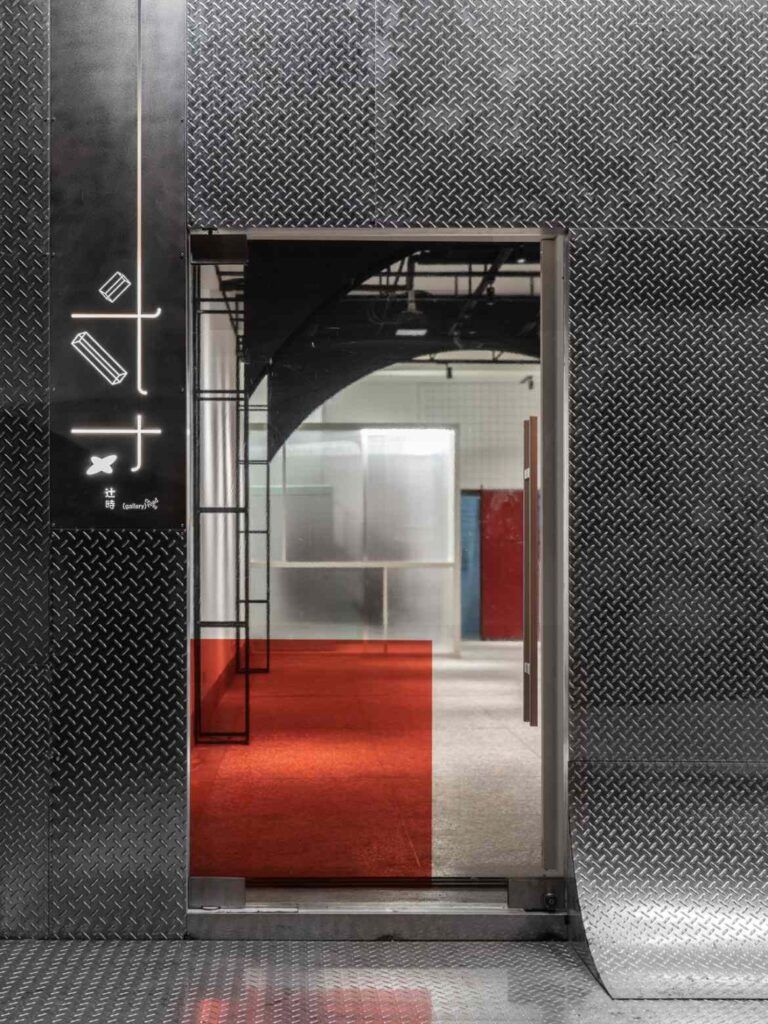Gallery Crossroad is a good example of adaptive reuse, in which a run-down Taiwanese residential property has been converted into a culture hub for photography lovers.

February 1st, 2022
From the outset, Gallery Crossroad aims to revitalise the neighbourhood, offering a new social destination for the public while giving recognition to photographers. The journey of discovery begins outside the gallery, with chequer-patterned galvanised steel used for the facade. A material that is typically used for manhole covers, it imparts a sense of durability to the gallery – a nod to the enduring building built 40 years ago – and presents a blank canvas to what lies inside.

The interior gallery space adopts an achromatic palette and draws inspiration from a darkroom by blocking all windows at the front to create an impactful perception to visitors. Steel wireframe structures were constructed to hang pieces, while their curved arches visually extend the gallery’s depth of space.

Additionally, a semi-clear screen made from hollow boards separates the reception from the gallery area. Its translucent property suffuses an indistinct glow that is resonant with surrealist ambiances; whereas, the existing red door and grid tiles on the walls were intentionally kept intact to create a perceptual contrast and recall the vicissitudes of times.

Photography involves light and framing, and RIS Interior Design has successfully captured the nuances in Gallery Crossroad. Through different angles of framing, shadows of visitors, art pieces, and architectural elements cast dark, tonal effects, sustaining dynamic movements and increasing the illusion of volume despite the gallery’s tiny footprint.

A searchable and comprehensive guide for specifying leading products and their suppliers
Keep up to date with the latest and greatest from our industry BFF's!

XTRA celebrates the distinctive and unexpected work of Magis in their Singapore showroom.

The Man x Machine x Material collaboration by Jarrod Lim and The American Hardwood Export Council explores how generative AI can enhance design processes while also revealing the areas where human intuition remains irreplaceable.

Notable for its adaptive reuse and retail presence, Rosebery Engine Yards is a landmark mixed-use project in Sydney’s inner south.

Saturday Indesign 2024 featured a series of design discussions on topics ranging from adaptive reuse to Australian aesthetics.
The internet never sleeps! Here's the stuff you might have missed

As the highly respected and multi-award-winning Sydney practice celebrates a quarter of a century, Sam Crawford reflects on his the journey so far in this comprehensive Q&A.

Architectus Conrad Gargett’s revitalisation of Africa Hall in Addis Ababa traces lines of historical, cultural and architectural significance.